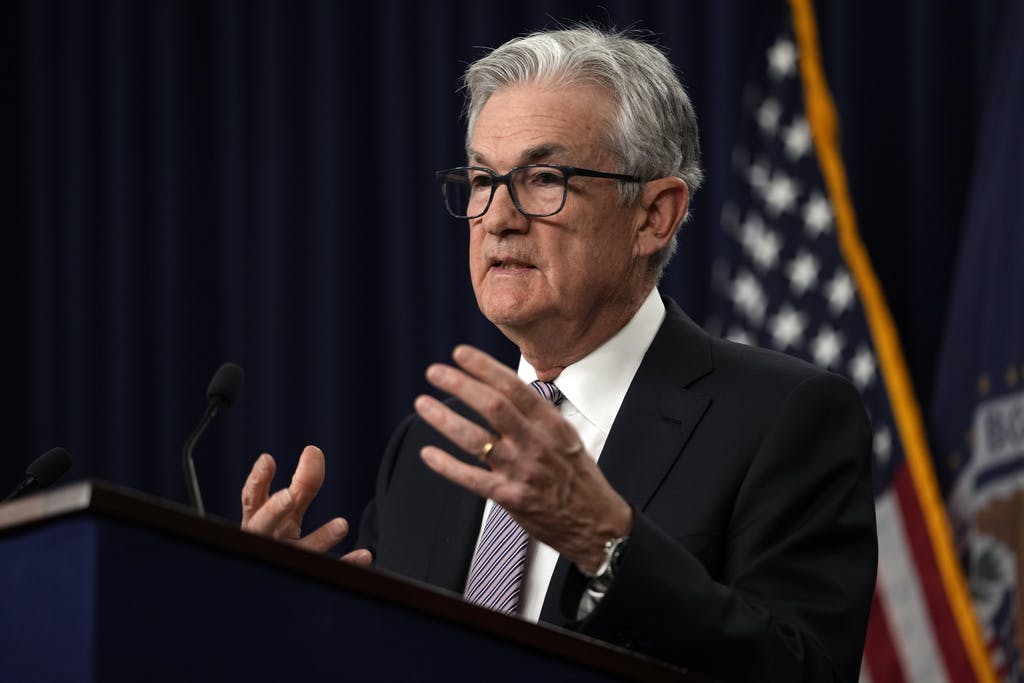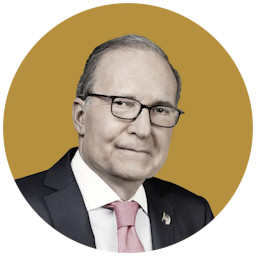Powell: The Pause That Refreshes?
Fed chairman would have backed McCarthy’s budget bill.

Chairman Powell and the Fed went ahead and raised their target rate by a quarter of a point, as everyone expected, and also changed their written statement in a way that seems to open the door for a rate-hiking pause. Long-term yields fell a bit; counterintuitively, stock market prices also fell, by about 270 points. Okay, so it goes.
What Mr. Powell should’ve said is how important it is for Congress to pass a debt ceiling increase that includes budget reforms. I’m not asking him to endorse Speaker McCarthy’s excellent plan, but, if Mr. Powell had a backbone, he would’ve made it clear that at least generically the Republican House plan would make the Fed’s job easier and might even guarantee that the Fed’s rate-hiking would stop.
Cutting $130 billion off of FY ’23 spending, and up to $500 billion for FY ’24, and putting a 1 percent cap on future spending increases would reduce inflationary pressures from the fiscal side and make the Fed’s job easier.
Remember, the McCarthy plan would also rescind as much as $90 billion in unspent Covid money, includes workfare, cancels the student loan bailout, cancels $200 billion worth of green tax credits, and would also reopen the fossil fuel spigots. Every single one of these provisions would reduce inflationary pressures and promote economic growth.
Spending limits, workfare, fossil fuel production — all this would promote supply-side growth so that the existing money supply would be chasing more goods. Hence lower inflation.
Mr. Powell never does this sort of thing. For some reason, he’s afraid to take a cue from Alan Greenspan and Paul Volcker, and that’s too bad.
There’s another issue here, and that is the Fed never talks about strengthening the real value of the dollar, which in the long run is the key to price stability.
Using commodity prices as a reference point for a true dollar value — as was done under Paul Volcker and Alan Greenspan and three Reagan Fed appointees, Wayne Angell, Manley Johnson, and Robert Heller — gave us price stability throughout the 1980s and 1990s.
Today’s Fed under Mr. Powell never seems to talk about the dollar or its key role in maintaining price stability. Actually, though, the commodity value of the dollar has been rising for about a year as broad commodity indices have been declining steadily.
By the way, with a deeply inverted yield curve and a contracting M2 money supply, the Fed is probably a lot tighter than the FOMC believes. Stabilizing the dollar and promoting lower spending, lower taxes, and minimal regulations would solve the inflation problem without throwing millions of people out of work and destroying the economy.
All of those Phillips curve Keynesians on the Fed staff don’t understand any of this — and it’s a pity.
A supply-side solution with a classical value of King Dollar would get us out of this stagflation slump that Americans have suffered through for the last couple of years.
From Mr. Kudlow’s broadcast on Fox Business News.

